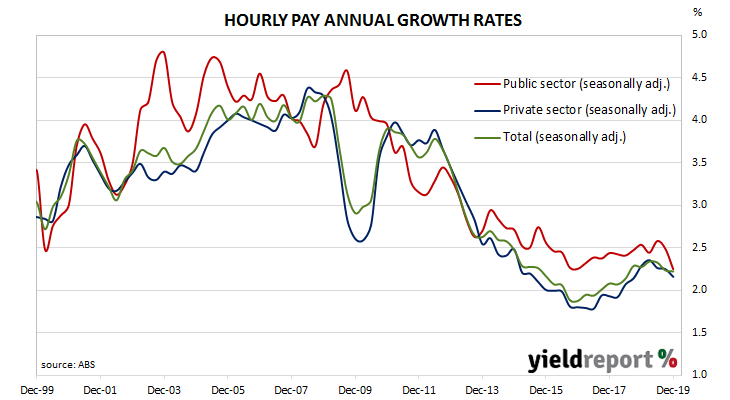After unemployment increased and wage growth slowed during the GFC, a resources investment boom prompted a temporary recovery back to nearly 4% per annum. However, from mid-2013 through to the September quarter of 2016, the pace of wage increases slowed until mid-2017 when it began to slowly creep upwards. The latest report on aggregate wages indicates this slow process may have ended.
According to the latest wage price index (WPI) figures published by the ABS, hourly wages grew by 0.5% in the December quarter, in line with the expected figure and the same rate as in the June and September quarters. The year-on-year growth rate remained unchanged at 2.2%.
ANZ senior economist Catherine Birch said, “The persistent feebleness in wage growth reflects higher labour market underutilisation during the year and is consistent with the enterprise bargaining agreement data, which show that the average annual wage increase for all current agreements is now at a record low of 2.6%.” Commonwealth Government bond yields finished largely unchanged from the previous day, ignoring modest falls in US markets overnight. By the end of the day, the 3-year ACGB yield remained unchanged at 0.72%, the 10-year yield had inched up 1bp to 1.04% while the 20-year yield had slipped 1bp to 1.43%.
Commonwealth Government bond yields finished largely unchanged from the previous day, ignoring modest falls in US markets overnight. By the end of the day, the 3-year ACGB yield remained unchanged at 0.72%, the 10-year yield had inched up 1bp to 1.04% while the 20-year yield had slipped 1bp to 1.43%.
Prices of cash futures contracts remained largely unchanged, with a rate cut expected in the second half of 2020. May and June contracts respectively implied a 43% and a 56% chance of a 25bps rate cut, unchanged from the previous day. The July contract implied an 85% likelihood of another cut, while the August contract implied another cut in the cash rate target had been totally factored in.

